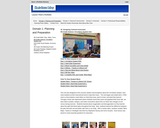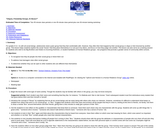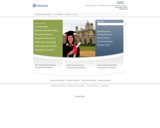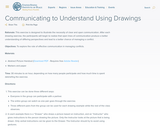
In this unit, students learn the purposes of the circulatory system.
- Subject:
- Health
- Healthful Living
- Material Type:
- Lesson Plan
- Provider:
- Digication, Inc.
- Date Added:
- 03/16/2018

In this unit, students learn the purposes of the circulatory system.

This resource provides activities to help students effectively deal with stress.

In this activity students will learn about the dangers of prescription drug abuse.

Students will identify the steps of effective hand washing and sequence these steps in proper order.

This resource is a questionnaire for students to see if they are getting an adequate amount of sleep.

As with all social beings, adolescents need a peer group that they feel comfortable with. However, they often then feel trapped by their social group or clique or feel shunned by another group. This lesson helps students explore the social "boxes" that they place themselves in or are put in by others, and focus on how they judge one another. The lesson can also serve as a training session for students who wish to be Big Brothers and Sisters to incoming freshmen, or student facilitators of Human Relations groups-- two programs that promote a greater sense of community within schools.

Students will list the principal pollutants in
our world's oceans, understand how humans are
altering ocean ecosystems, draw connections between individual actions and results at the
global level and develop strategies for minimizing
and counteracting international
environmental problems

The following activities will help your students learn how to protect themselves from both the
common cold and the flu.

Color Me Safe is a coloring book designed for children ages four to seven. Throughout the book, the Safe Family takes simple steps to prevent injuries, such as installing smoke alarms and using child safety seats. Children can have fun coloring the pictures and reading about the Safe Family. Color Me Safe can help parents talk with their children about safety at home and on the go! Teachers can integrate the story and messages into Pre-K and early grade school curricula and share copies with parents and children at health and safety events.

In this lesson students will identify a variety of vegetables they can eat for lunch.

In this lesson students will recognize the importance of eating a variety of foods for breakfast.

In this activity students will recognize the importance of eating a variety of foods for dinner.

In this lesson students will recognize the importance of eating a variety of foods for lunch.

In this lesson students will recognize the importance of eating a variety of foods for snacks.

This article discusses common asthma triggers including tobacco smoke, pets, air pollution, and mold.

Students will learn to differentiate communicable and non-communicable diseases and how they are transmitted.

This exercise is designed to illustrate the necessity of clear and open communication. After each drawing exercise, the participants will begin to realize that open lines of communication produce a better understanding of differing perspectives and lead to a better chance of managing a conflict.

This lesson is about how to say ‘No’.

This resource provides information to help students learn about having a strong character including showing compassion and caring about people around them in their community.

This is a fact sheet providing information on the male latex condom. Consistent and correct use of the male latex condom reduces the risk of sexually transmitted disease (STD) and human immunodeficiency virus (HIV) transmission. However, condom use cannot provide absolute protection against any STD. The most reliable ways to avoid transmission of STDs are to abstain from sexual activity, or to be in a long-term mutually monogamous relationship with an uninfected partner. However, many infected persons may be unaware of their infection because STDs often are asymptomatic and unrecognized.